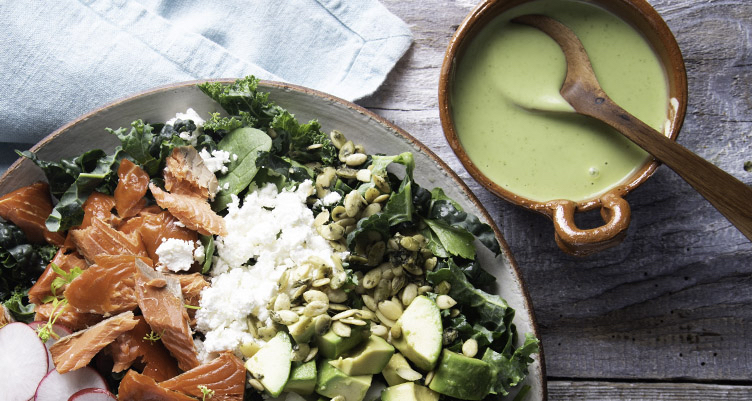How to Calculate Net Carbs on Keto And Why Not All Carbs Are Equal

- If you follow the ketogenic diet, you need to know how to calculate net carbs. These are the carbohydrates your body uses for energy.
- Fiber and certain sugar alcohols don’t count toward your total carbs on keto. This means you can subtract them from your daily total—with some important exceptions.
- Find out how to calculate net carbs and how many you should aim for. We’ll also explore why not all sugar alcohols are truly low-carb.
If you’re new to the ketogenic diet, you might ask, “What are net carbs? Why should I care?” On a lower-carb diet, net carbs vs. total carbs are a big deal.
Every gram of carbohydrate you eat counts. It’s essential to know how to calculate net carbs so you don’t go over your daily limit. While the total carbohydrate content of a food may seem high, subtracting fiber and certain sugar alcohols gives you the net carbs. These are the carbs that affect blood sugar levels.[1] This distinction is crucial for staying in ketosis.
Read on to learn what net carbs are and why they matter. You’ll also learn how to use a manual net carb calculator when meal planning.
What Are Net Carbs?

There’s more to a food label than total carbohydrates. That total can also include fiber, sugar and sugar alcohols. This totality helps determine your net carb intake.
What does “net carbs” mean? Net carbs are the carbohydrates in food that you digest and use for energy.
It might be surprising to hear that your body doesn’t use everything you eat. Your body can’t completely break down and absorb some types of carbs, like fiber[2] and sugar alcohols.[3] These carbs pass through your body without being digested. That’s why you can subtract most fiber and sugar alcohols from your daily carb total.
On a keto diet, eating too many carbs can kick you out of ketosis. When you calculate net carbs, you’ll have a better idea how many carbs you’re eating in a day.
Next up, learn about the difference between carbs vs. net carbs to ensure you’re planning your meals in a keto-friendly way.
Carbs vs. Net Carbs
If you look at the nutrition label on most packaged foods in the United States, you’ll see total carbohydrates, dietary fiber and sugar. This information is regulated by the Food and Drug Administration (FDA) and has an official, legal definition.
Net carbs are different. Food manufacturers came up with the term “net carbs” in the early 2000s when low-carb diets went mainstream. Today, you might even see net carb callouts on the labels of lower-carb and keto foods.
However, there’s no official definition of net carbs. This means the way companies calculate their totals can differ.[4]
To calculate net carbs for keto for yourself, take a food’s total carbohydrates and subtract:
- Dietary fiber: Fiber is a carb, but your body doesn’t have the enzymes to break it down.[5] It passes through your digestive system unchanged. For keto, this means grams of fiber have zero net carbs and zero calories.
- Certain sugar alcohols: These sugar substitutes taste sweet. However, their molecular structure is slightly different from that of sugar molecules. Many sugar alcohols are either partially or entirely indigestible.[6]
Certain sugar alcohols do impact your blood sugar. You should factor them into your keto carb count if you eat a large amount. Keep reading for more details on that below.
Why Counting Carbs on the Keto Diet Is So Important
WWhen you keep net carbs low enough—under about 50 grams of net carbs per day—your body enters ketosis. Ketosis is a metabolic state where you shift from burning carbs for energy to burning fat for fuel.[7]
Getting into ketosis, and staying there, is the whole goal of keto. When you’re in ketosis, you feel more energy, have clearer thinking and fewer cravings, among other benefits.[8] Keto can even support weight loss.[9]
The problem is that eating too many carbs can prevent you from reaching ketosis. It can even kick you out of a fat-burning state. That’s why learning how to calculate net carbs is important.
Plus, eating a high amount of carbs (and especially refined ones, like starches and sugars) can contribute to:
- Spikes in your blood sugar[10]
- Inflammation[11]
- Food cravings[12]
- Disruptive changes to your hormones[13]
- Shifts in your gut bacteria[14]
- Health conditions like obesity, insulin resistance and metabolic syndrome[15]
The trick is figuring out what your ideal carb intake looks like.
Remember, carbs are fine in moderation. But if you’re on a strict keto diet, you have to pay attention to every single gram and how your body responds to different foods.
Net carbs are important, but they’re not the whole picture on keto. Keep reading to find out why.
How Many Net Carbs on Keto Should I Be Aiming For?

On the standard ketogenic diet, you might eat as few as 20 grams of net carbs per day. This equates to 5 to 10% of your total calorie intake. However, the “right” number of net carbs depends on you.
Some people can eat slightly more carbs and stay in ketosis. Others need to stay on the lower end of the spectrum. Here are three examples:
- You’re highly active: Let’s say you exercise three to four times per week, and you’re in the gym for about an hour. You’re more likely to burn through your glycogen stores and stay in ketosis. You might notice improvements in your workouts when you bump up your carb intake.
- You’re pretty sedentary: You spend most of your day sitting down at a desk or in the car, and you want to lose some body fat. Keep your net carb intake on the lower end, around 5% of your total calories.
- You’re feeling tired: Some people feel more energized and sleep better when they bump their net carb intake up to 6% of their total calories. This style of eating is known as “modified keto.” If you have poor sleep and fatigue that won’t quit, your body might be asking for more carbs.
Ready to calculate your net carbs? Let’s dive in.
How to Calculate Net Carbs for Keto
Here’s the formula to count carbs and stay in ketosis:
Grams of total carbs – fiber – sugar alcohols = net carbs
There’s one important element to factor into your net carb formula: Not all sugar alcohols are truly carb-free.
Some sugar alcohols can kick you out of ketosis because they have a high glycemic load. However, certain “low-carb” or “sugar-free” foods subtract those sugar alcohols from the total carb count.[16] This makes products appear lower-carb than they are.
On the flip side, manufacturers will sometimes list sugar alcohols that don’t affect your blood sugar as if they were normal carbs. This can make net carb counts seem higher than they are.
So, how are you supposed to calculate net carbs for keto? Know your sugar alcohols.
Sugar Alcohol on the Keto Diet
First up, what is sugar alcohol? It’s a type of carbohydrate that tastes sweet. On a molecular level, it looks like sugar and alcohol (hence, the name). Some sugar alcohols occur in fruits and vegetables. Others are made by processing sugar.
But your body doesn’t treat sugar alcohols the same as sugar. Your body processes regular sugar pretty easily. Most sugar alcohols aren’t as easily digested or absorbed. This is why they’re used in sugar-free and lower-carb foods.
So, do sugar alcohols count as carbs? It depends on the type.
The following sugar alcohols do not count toward net carbs for keto. If you’re eating something with these sweeteners, you don’t need to include them in your carb count:
These sugar alcohols below do count (at least partially) toward net carbs:
Each gram of maltitol, sorbitol, isomalt or glycerin counts as about half a gram of carbs for keto.
Although sugar alcohols are not digestible carbs, your gut bacteria ferment them. This can create gas and bloating in your small intestine.[22]
Here’s a good rule of thumb: Avoid eating more than roughly 15 grams of sugar alcohol at a time and watch how you tolerate them.
How to Calculate Sugar Alcohol on a Low-Carb Diet
If you’re eating something that contains one of these sugar alcohols, use a slightly different formula to calculate total net carbs.
Take the grams of the sugar alcohol, divide by two and add it to your carb count. For example:
Grams of total carbs – fiber – sugar alcohols + (maltitol / 2) = net carbs
And finally, a few final thoughts when calculating your carb intake on keto:
Additional Considerations When Counting Carbs on Keto
Always read the nutrition labels on your foods. When you eat carbs that don’t raise your blood sugar, you can take them out of your net carb total.
Avoid highly insulinogenic carbs. These food choices trigger a blood sugar response in the body. They’re higher on the glycemic index (GI), which is a numerical score that indicates how a food will affect your blood sugar.[23]
On keto, avoid foods with a high GI, as high GI foods have a larger effect on your blood sugar. The GI score also explains why you should avoid foods like potatoes, carrots and legumes. Though they contain fiber, they’re more likely to spike insulin levels and kick you out of ketosis.
Net carbs can be confusing, but what it means is that you have flexibility in your carb total. That’s good news if you want to leave room in your macros for other foods and drinks. For example, if you’re drinking alcohol on keto or enjoying a slightly higher-carb meal.
After all, flexibility and moderation are keys to a lifelong relationship with a healthy diet. Keep adjusting your diet according to your lifestyle and pay attention to your body’s needs.
Sign-up for the Bulletproof mailing list and receive the latest news and updates!
This article has been updated with new content.



